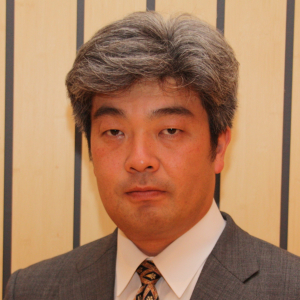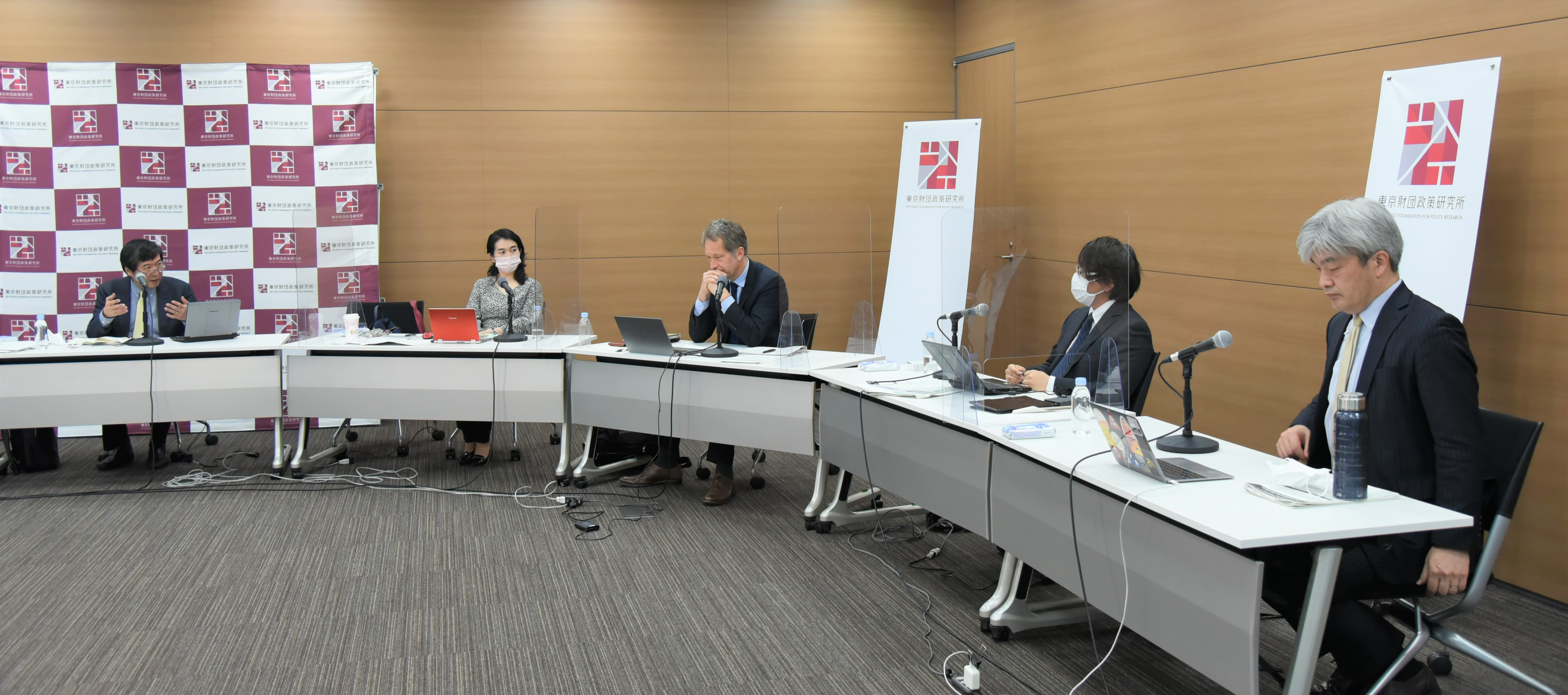
How Will the Economic Security Law Change Japan’s Sci-Tech Policy?
May 9, 2023
R-2022-120E
Japan’s new economic security promotion act seeks to secure the country’s “strategic indispensability” while actively engaging the private sector in sci-tech policy. Can it deliver?
* * *
Japan’s Economic Security Promotion Act, enacted in May 2022, was drafted with the aim of minimizing Japan’s vulnerability to economic coercion from other countries at a time when the threat of such pressure has become a major international concern. With the help of this legislation, the government hopes to build Japan’s resistance to economic coercion, both by enhancing its “strategic autonomy” and by pursuing “strategic indispensability” through superior, made-in-Japan technologies on which the rest of the world depends. To help Japan achieve the second goal, the law establishes a new framework for enhancing the development of advanced critical technologies with government funding and other support.
In the following, I will review this aspect of the Economic Security Promotion Act and its likely impact on the ongoing effort to revamp and strengthen Japan’s science and technology policy.
Supporting Advanced Critical Technologies
Technology plays many important roles in contemporary society. It fuels the development of business and industry and can transform the military and security sectors as well. Given the rising tensions in the global security environment in recent years, the issue of technological competitiveness has emerged as a key issue in international affairs. For this reason, many countries have taken steps to tighten controls to prevent advanced or sensitive technology from leaking to other countries. They have also leveraged their own technological advantages to pressure other countries through the implementation of sanctions and export controls.
In the midst of this trend, Japan has been rethinking the importance of science and technology to national security, including government infrastructure, counter-terrorism, cybersecurity, and the development of Japan’s military defense capabilities. In its materials explaining and supplementing the Economic Security Promotion Act, the government has stated that promotion of research and development of advanced critical technologies with potential applications in these fields, together with appropriate utilization of the results, “is essential for Japan to maintain its place in the international community.” For this reason, the law calls for government support for R&D of “designated critical technologies” (DCTs).
Under the law, the government is to draft a Basic Guideline for Research and Development of Designated Critical Technologies and, on the basis of those guidelines, provide research support through the provision of “necessary information” and funding. In this context, “necessary information” means information regarding the country’s critical technological needs—for example, the kind of technologies needed to build public infrastructure or protect Japan from cyberattacks. Researchers will use this information to guide their research decisions. Since a substantial portion of that information is bound to be classified, participating researchers will be legally obligated to protect sensitive information as agreed.
As of October 2022, the government had singled out the following 20 technologies as critical fields, although a policy on how they will be developed has yet to be determined.
• Biotechnology
• Medical and public health technology
• Artificial intelligence and machine learning
• Advanced computing
• Microprocessor and semiconductor technology
• Data science, analysis, storage, and management
• Advanced engineering and manufacturing technology
• Robotics
• Quantum information science
• Advanced surveillance, positioning, and sensing technology
• Neurocomputing and brain interface technology
• Advanced energy and energy storage technology
• Advanced information, communication, and networking technology
• Cyber security
• Space technology
• Marine technology
• Transportation technology
• Hypersonics
• Chemical, biological, radiation, and nuclear technology
• Advanced materials science
As a glance at this list suggests, the identification of concrete topics for government-supported DCT research will involve further narrowing down and considerably more specificity. But the list is revealing in terms of the fields in which the Japanese government aims to achieve “strategic indispensability.” They include not only emerging domains like AI and quantum information science, which have yet to achieve full social implementation, but also long-established fields, like marine technology (engines and sonar will probably be the focus), in which innovation is ongoing. In addition, all 20 fields encompass dual-use technologies that could well determine a country’s military advantage in the future.
Sci-Tech Policy under the New Law
There are two important aspects to sci-tech policy-making envisioned under the Economic Security Promotion Act.
First is that the process will not be unilaterally dictated by the government, since so many designated technologies are held by private businesses and corporate research institutes. For this reason, policy decisions will be made through private-public partnerships.
Traditionally, the government had formulated an overarching policy for public funding of sci-tech research in consultation with a handful of elite scientists and provided funding based on the research proposals submitted by scientists, who were able to advance the research with a degree of independence.
Under the Economic Security Promotion Act, on the other hand, a “public-private cooperation council” comprising scientists and government officials will be established for each project. Participating in the council will be the state minister in charge of R&D,[1] heads of relevant government agencies, heads and members of research institutes, and relevant think tank personnel. They will determine the basic directions for research under each project and be responsible for technology and information management. The government will thus become a more active partner in advancing research, sharing information to match scientific “seeds” to public needs and providing institutional support to facilitate social implementation. This system will impose somewhat tighter restrictions on researchers, as council members will be required to manage sensitive information appropriately and have the same confidentiality obligations as national civil servants. Research findings will be made public, as a rule, but any technical information whose release could expose security or national vulnerabilities will be handled on a case-by-case basis.
The second key point of the new law is that it calls for the establishment of a new Research Institute for Technological Studies to carry out international surveys in each field of technology and make recommendations to the government for Japan’s sci-tech strategy. Envisioned as a public-policy think tank comparable to the RAND Corporation of the United States, the institute will provide the Japanese government with the analyses it requires for strategic decision-making on sci-tech policy and will be under obligation to protect sensitive information. As yet there is no information on the scale of the institute or scope of its research, but it would have to be quite large to conduct technological surveys of the major industrial democracies and China in all 20 designated fields.
The K Program
In anticipation of the enactment of the Economic Security Promotion Act, the government created a mechanism for promoting strategic technologies in the form of the so-called K Program (Key and Advanced Technology R&D through Cross Community Collaboration Program). Jointly administered by the Council for the Promotion of Economic Security and the Council for Science, Technology, and Innovation, under the Cabinet Office, the K Program was created to promote research, development, and application of “advanced key technologies vital to maintaining Japan’s position in the international community over the long term.” It was launched with funding from the fiscal 2021 supplementary budget to serve as the “designated fund” that will be used to support DCT projects under the Economic Security Promotion Act.
The K Program identifies five technologies and four technical domains as priorities for research and development.[2] The five technologies are AI, quantum technology, robotics, advanced sensing, and advanced energy technology. All five were cited in a report on the development of think-tank functions pertaining to the creation of a safe and secure society (commissioned by the Cabinet Office). They are also fields in which many countries have already made considerable headway. The four domains are the oceans, aerospace, cross-domain and cyberspace, and bioscience. These are characterized as domains vital to human and social activity, in accordance with the Science, Technology, and Innovation Basic Plan.
The K Program is premised on diversity, calling for participation not only by researchers affiliated with universities and major corporations but also by scientists and engineers employed by start-ups and smaller companies with technological potential. Another key feature of the program is that it encourages wide-ranging interdisciplinary research, not just projects confined to specific fields. In addition, it stresses support for R&D focused on globally competitive technologies that are oriented to social implementation. This means reaching out to groups that are likely to be engaged during implementation and considering future frameworks for practical operation and commercialization.
Still Playing Catch-up?
One stated purpose of the Economic Security Promotion Act is to make Japan an indispensable presence in the international community with technology no other country can equal. Yet rather than promote further development in fields where Japan already holds a technological edge, the government appears intent on catching up with other countries in areas where Japan is lagging behind—as by establishing a think tank to investigate trending technologies in other countries.
This drive to reinvent technologies that other countries already have is fundamentally the same as the “catch-up” strategy that Japan has pursued in the course of its modernization. While the Economic Security Promotion Act envisions new frameworks for policy-making in the form of public-private cooperation councils and a massive think tank, the underlying strategic approach is anything but new.
However, there is one sense in which the law seems to mark a sharp departure from the past, and that is its focus on technologies in fields closely associated with national security. Since the end of World War II, the government’s sci-tech policy has distanced itself from defense matters. This stance was consistent with the longstanding position of the Science Council of Japan, which repeatedly issued statements rejecting any involvement in scientific research “for war purposes,” meaning military-related research. The promotion of dual-use technology under the Economic Security Promotion Act may be aimed in part at mitigating such resistance.
In 2015, in an attempt to foster security-related research, the government established the National Security Technology Research Promotion Fund under the Acquisition, Technology, and Logistics Agency (ATLA). But scientists—particularly university-affiliated researchers—are said to have avoided the program,[3] and one reason appears to be concerns that the Science Council will regard projects supported by the defense budget as research “for war purposes.” The Economic Security Promotion Act could skirt this problem by using the budget of the Cabinet Office, which has jurisdiction over the law.
Meanwhile, the Science Council has begun to show some flexibility, acknowledging that it has become difficult to draw a clear line between strictly civilian technology and dual-use technology.[4] This should make it easier for institutions and researchers to participate in R&D of dual-use technologies under security-related programs administered by the Cabinet Office. In addition, under the Economic Security Promotion Act, government-supported research will be overseen by public-private cooperation councils, so private-sector researchers will be able to take part in decision-making while subject to confidentiality obligations, instead of being directly under government orders.
The Economic Security Promotion Act thus promises no fundamental change in Japan’s science and technology strategy: Rather than advancing strategic indispensability, it adheres to the “catch-up” approach of acquiring what other countries already have. However, it augurs a major change by targeting the development of dual-use technology and potentially breaking down a lingering barrier between the government and scientists in the field of national security.
[1] Minister responsible for granting funds to support eligible R&D projects, https://www.cas.go.jp/jp/seisaku/keizai_anzen_hosyohousei/r4_dai1/siryou7.pdf.
[2] Cabinet Office, “Keizei Anzen Hosho Juyo Gijutsu Ikusei Puroguramu kenkyu kaihatsu bijon (dai ichiji)” (Vision for Research and Development [Phase 1], Key and Advanced Technology R&D through Cross Community Collaboration Program), https://www8.cao.go.jp/cstp/anzen_anshin/2_vision.pdf.
[3] Yukiko Niitani, “Nihon no daigaku ni okeru gunjiteki anzen hosho kenkyu e no torikumi to kongo no kadai” (Research on Military Security at Japanese Universities: Initiatives and Challenges), Bunri Shinaji, vol. 24, no. 1 (April 2020), pp. 21–40.
[4] “Gakujutsu Kaigi, gunmin ‘ryoyo’ gijutsu o yonin . . . ‘Tanjun ni nibun suru no wa mohaya konnan,’” (Science Council to Permit Research on Dual-Use Technology . . . “No Longer Possible to Separate the Two”), Yomiuri Shimbun, July 27, 2022, https://www.yomiuri.co.jp/science/20220726-OYT1T50377/.
















